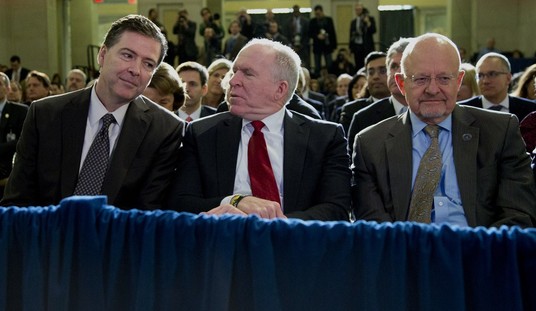You can read it as tragedy or as farce but read the New York Times blogger John Harwood’s post on “Mystery for White House: Where Did the Jobs Go?” Harwood writes, “the whodunit has flummoxed economists in both parties for a year.” And the captains of the ship of state are no nearer to a solution to this mystery. The article says:
In January 2009, Mr. Obama’s economic advisers predicted that unemployment would peak around 8 percent if Congress passed their recommended stimulus program. As Republicans never tire of pointing out now, the rate hit 10.1 percent by October and has fallen less than one percentage point since. …
Christina Romer, who leads the council now for Mr. Obama, said, “We’ve done a lot of things to look at possible explanations.”
Analysts looked into whether the troubled housing market created “job-lock” by preventing potential employees from selling homes and moving toward new opportunities. They also considered whether extended unemployment benefits deterred others from going back to work. But they concluded that such factors couldn’t explain the magnitude of job losses.
Instead, their analysis pointed toward the effect of the financial crisis on business owners who reacted to the fear and uncertainty by laying off employees in extraordinary numbers.
But whatever the cause happens to be the more proximate problem is to find a way to get out of the line of blame; to associate the unidentified X factor of failure with George W. Bush, so that whatever befalls the onus will fall on the past and not on the business’ expectation of the future. Describe things so that business is still being haunted by the past, not frightened by the future. For the the future, which is where President Obama’s accomplishments all happen to be, is by definition bright and beautiful. The dark past, even the past 500 days, all belong to GWB.
At the White House, Mr. Axelrod says voters “aren’t necessarily prepared to turn back” to the Republicans he says “dug the hole” of joblessness to start with. But unless Democrats make that argument more effectively, the jobs emergency will remain a political emergency for Mr. Obama and his party.
But before Mr. Axelrod casts around for yet another dead hand to remove from the President’s shoulder, the question is which hand should he remove? There are several and in fact Congress is adding more dead hands all the time. There are more dead hands in the 2,000 page pieces of legislation that are being churned out than you can shake a stick at. Unless the offending influence can be identified and the economists freed from their bafflement then fixing things is going to be a problem. But that would be too simple. It would imply a willingness to take time to solve problems piecewise instead of by broad brush strokes. No. What we need is radical change.
But radical interventions do not always improve the state of a complex system. Sometimes you don’t even know what they do. People who invoke the ‘precautionary principle’ to mandate wholesale changes in “carbon” do so with the implicit certitude they know what they are doing, even when as in this case, they don’t. But who cares? If we can re-architecture climate, we can re-architecture society. At a recent talk I attended on “climate change” one speaker argued one of the things reducing CO2 might also do is reduce plant growth. Is it true? Well if it is then on the day after we reduce the “carbon footprint” to the levels desired by Greenies the question we might see posed in the newspapers is: “Mystery for White House: Where Did the Crops Go?” Tragedy or farce?
The past for all of its faults contains a lot information about how things work. Human institutions — the existence of families, constitutional arrangements, etc — have evolved in response to concrete challenges. They are the way they are for a reason. Very often things seem simple because they are really complicated and unfortunately every now and again a generation of leaders comes along that sees no obvious use for this or that thing. And like a mechanic newly arrived on the scene, they pluck it out of the mass of roiling machinery without understanding its purposes or simply because they don’t like who invented it and throw it away, believing in their wisdom or vanity, that the systems they inherited were conceived in ignorance, superstition and by NASCAR afficionados. Then without a backup, without an image, without the possibility of rollback the unexpected sometimes happens. Murphy shows up at the door. And looking up at that eminent Irishman they subsequently ask “why are you here?”
Thus the gold standard in public policy was to leave people to make their own arrangements unless there was a compelling interest to do otherwise. Because people do things for a reason, even if it is not clear to us why, and being in the innermost OODA loop, they are in a better position to change course if they get it wrong. The default activity of government, which operates in distant capitals was to do nothing. This attitude is captured in the folk saying, “if it ain’t broke, don’t fix it.” But that is so yesterday. None of those old sayings stands a chance before the great enterprise of transcendant Hope and Change. And what is that? Just change it and hope it works.
Now if that doesn’t turn out in the expected way, how about we try this. Instead of depending on the cumulative effects of generations of political dead hands, let’s try relying on the invisible hand — the aggregate arrangments of people in the marketplace — for a change. People if left to order their affairs usually do so sensibly. My guess is that the man in the street understands very well where the jobs went. But what does he know?










Join the conversation as a VIP Member